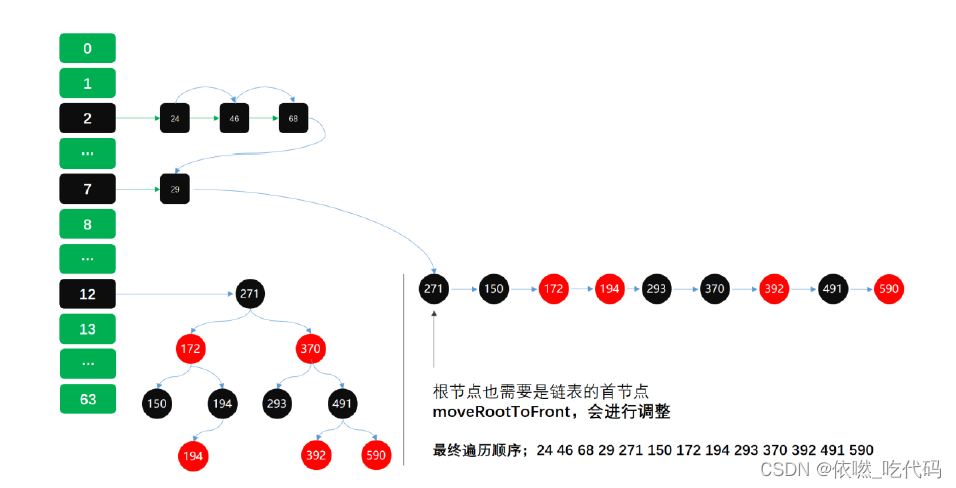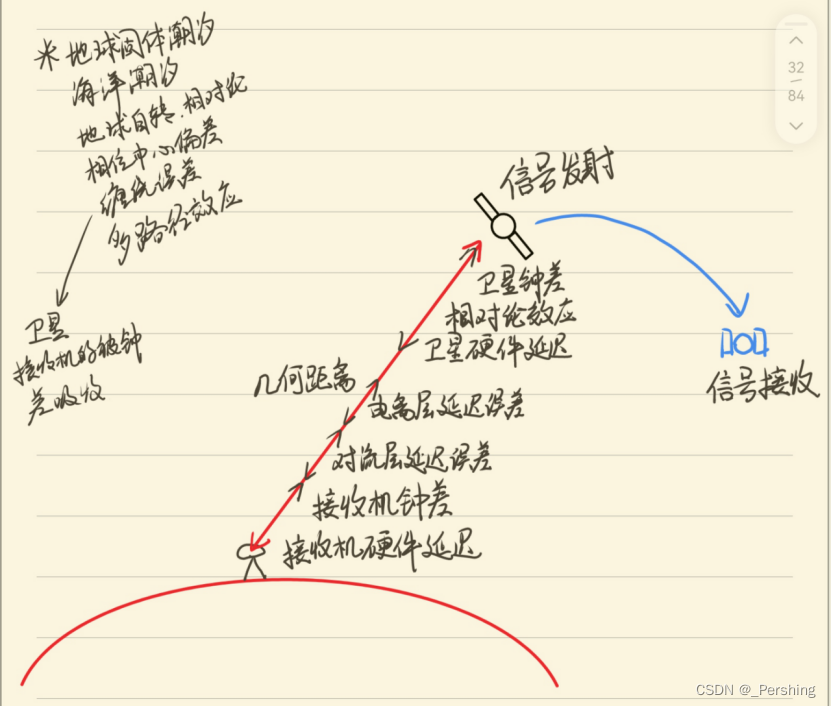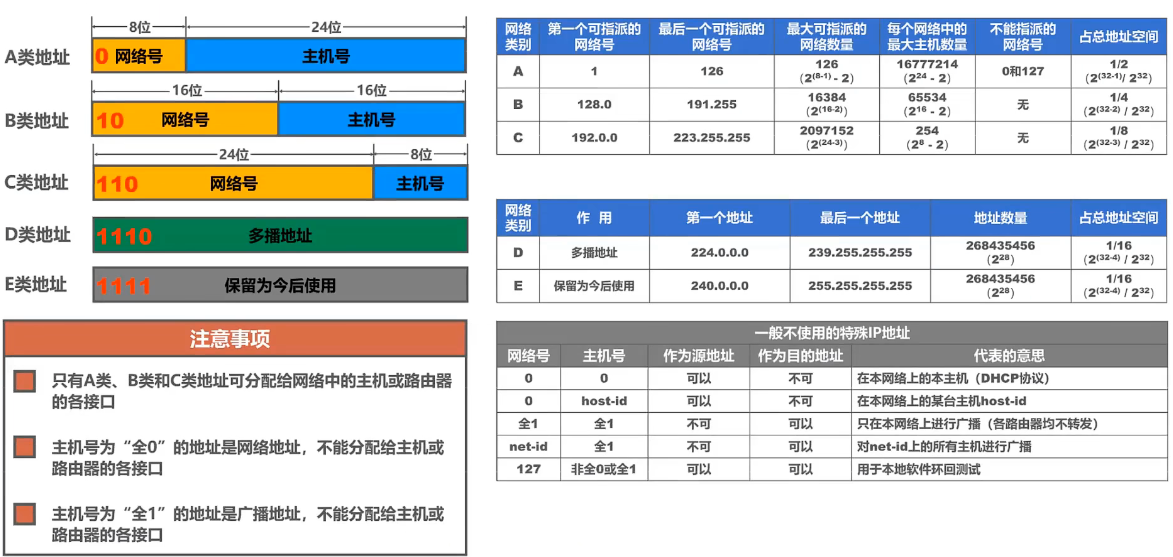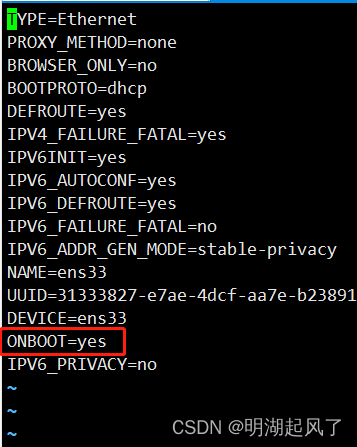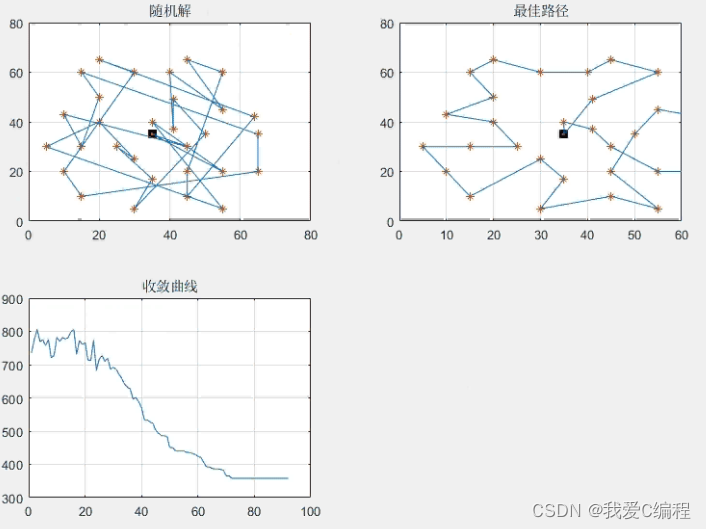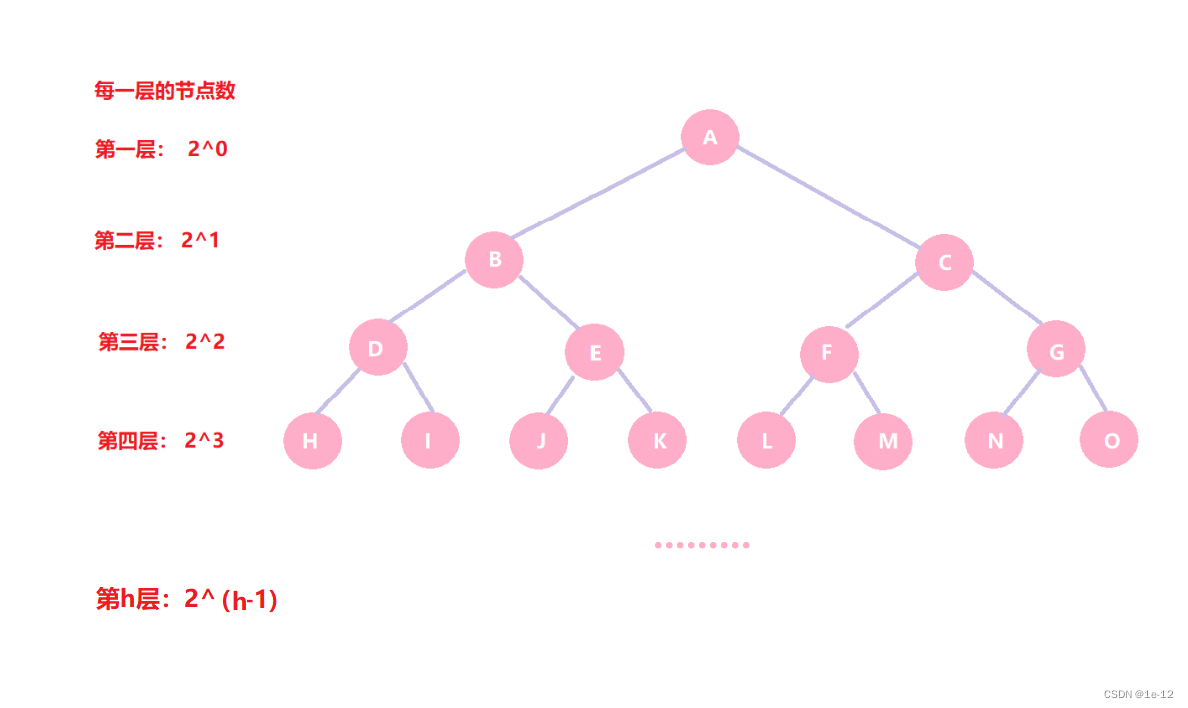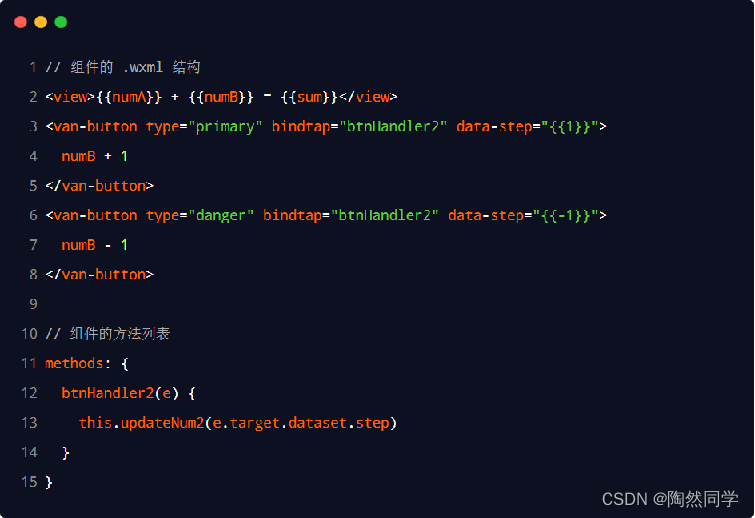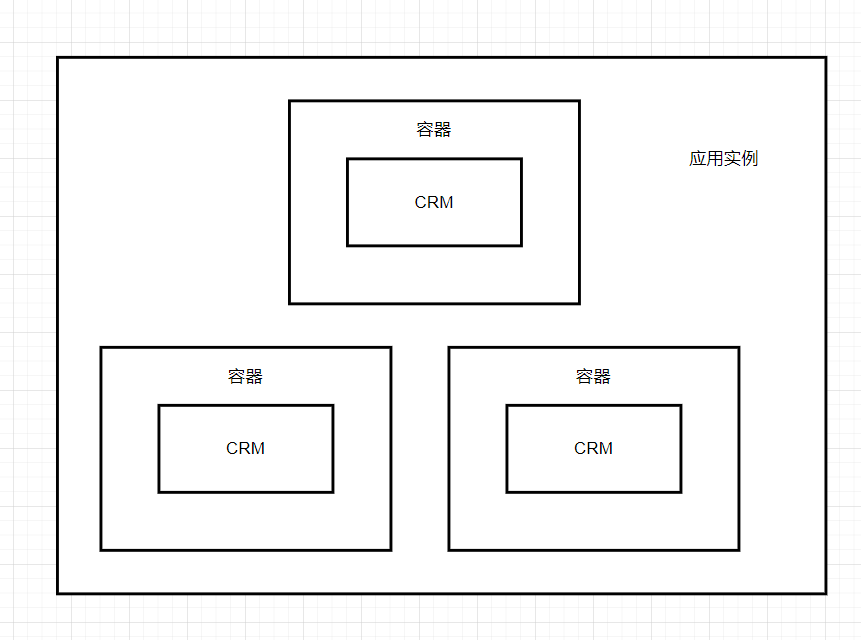系列文章目录
文章目录
- 系列文章目录
- 前言
- 一、 回顾总结
- 二、HashMap数据插入流程
- JDK1.8 HashMap的put方法源码如下:
- 2.1 扩容机制
- 2.2 链表树化
- 2.3 红黑树转链
- 三、查找
- 总结
- 四、删除
- 五、遍历
前言
既上一节内容 本节内容是,HashMap还有基本的数据功能;存储、删除、获取、遍历,在这些功能中经常会听到链表、红黑树、之间转换等功能。
回顾上一节
一、 回顾总结
简单来说就是通过你的Key值取得哈希再计算下标,之后把相应的数据存放到里面。
但是会遇到问题
比如;1. 如果出现哈希值计算的下标碰撞了怎么办?
2. 如果碰撞了是扩容数组还是把值存成链表结构,让一个节点有多个值存放呢?3. 如果存放的数据的链表过长,就失去了散列表的性能了,怎么办呢?
4. 如果想解决链表过长,什么时候使用树结构呢,使用哪种树呢?
二、HashMap数据插入流程
HashMap中一个数据插入的整体流程,包括了;计算下标、何时扩容、何时链表转红黑树等,具体如下;
- 首先进行哈希值的扰动,获取一个新的哈希值。
(key == null) ? 0 : (h = key.hashCode()) ^ (h >>> 16); - 判断tab是否位空或者长度为0,如果是则进行扩容操作。
if ((tab = table) == null || (n = tab.length) == 0) n = (tab = resize()).length;
- 根据哈希值计算下标,如果对应小标正好没有存放数据,则直接插入即可否则需要覆盖。
tab[i = (n - 1) & hash]) - 判断tab[i]是否为树节点,否则向链表中插入数据,是则向树中插入节点。
- 如果链表中插入节点的时候,链表长度大于等于8,则需要把链表转换为红黑树。
treeifyBin(tab, hash); - 最后所有元素处理完成后,判断是否超过阈值;
threshold,超过则扩容。 treeifyBin,是一个链表转树的方法,但不是所有的链表长度为8后都会转成树,还需要判断存放key值的数组桶长度是否小于64MIN_TREEIFY_CAPACITY。如果小于则需要扩容,扩容后链表上的数据会被拆分散列的相应的桶节点上,也就把链表长度缩短了。
JDK1.8 HashMap的put方法源码如下:
public V put(K key, V value) {
return putVal(hash(key), key, value, false, true);
}
/**
* Implements Map.put and related methods.
*
* @param hash hash for key
* @param key the key
* @param value the value to put
* @param onlyIfAbsent if true, don't change existing value
* @param evict if false, the table is in creation mode.
* @return previous value, or null if none
*/
final V putVal(int hash, K key, V value, boolean onlyIfAbsent,
boolean evict) {
Node<K,V>[] tab; Node<K,V> p; int n, i;
// 初始化桶数组 table,table 被延迟到插入新数据时再进行初始化
if ((tab = table) == null || (n = tab.length) == 0)
n = (tab = resize()).length;
// 如果桶中不包含键值对节点引用,则将新键值对节点的引用存入桶中即可
if ((p = tab[i = (n - 1) & hash]) == null)
tab[i] = newNode(hash, key, value, null);
else {
Node<K,V> e; K k;
// 如果键的值以及节点 hash 等于链表中的第一个键值对节点时,则将 e 指向该键值对
if (p.hash == hash &&
((k = p.key) == key || (key != null && key.equals(k))))
e = p;
// 如果桶中的引用类型为 TreeNode,则调用红黑树的插入方法
else if (p instanceof TreeNode)
e = ((TreeNode<K,V>)p).putTreeVal(this, tab, hash, key, value);
else {
// 对链表进行遍历,并统计链表长度
for (int binCount = 0; ; ++binCount) {
// 链表中不包含要插入的键值对节点时,则将该节点接在链表的最后
if ((e = p.next) == null) {
p.next = newNode(hash, key, value, null);
// 如果链表长度大于或等于树化阈值,则进行树化操作
if (binCount >= TREEIFY_THRESHOLD - 1) // -1 for 1st
treeifyBin(tab, hash);
break;
}
// 条件为 true,表示当前链表包含要插入的键值对,终止遍历
if (e.hash == hash &&
((k = e.key) == key || (key != null && key.equals(k))))
break;
p = e;
}
}
// 判断要插入的键值对是否存在 HashMap 中
if (e != null) { // existing mapping for key
V oldValue = e.value;
// onlyIfAbsent 表示是否仅在 oldValue 为 null 的情况下更新键值对的值
if (!onlyIfAbsent || oldValue == null)
e.value = value;
afterNodeAccess(e);
return oldValue;
}
}
++modCount;
// 键值对数量超过阈值时,则进行扩容
if (++size > threshold)
resize();
afterNodeInsertion(evict);
return null;
}
2.1 扩容机制
HashMap是基于数组+链表和红黑树实现的,但用于存放key值得的数组桶的长度是固定的,由初始化决定。
那么,随着数据的插入数量增加以及负载因子的作用下,就需要扩容来存放更多的数据。而扩容中有一个非常重要的点,就是jdk1.8中的优化操作,可以不需要再重新计算每一个元素的哈希值,这在上一章节中已经讲到,可以阅读系列专题文章。
final Node<K,V>[] resize() {
Node<K,V>[] oldTab = table;
int oldCap = (oldTab == null) ? 0 : oldTab.length;
int oldThr = threshold;
int newCap, newThr = 0;
// Cap 是 capacity 的缩写,容量。如果容量不为空,则说明已经初始化。
if (oldCap > 0) {
// 如果容量达到最大1 << 30则不再扩容
if (oldCap >= MAXIMUM_CAPACITY) {
threshold = Integer.MAX_VALUE;
return oldTab;
}
// 按旧容量和阀值的2倍计算新容量和阀值
else if ((newCap = oldCap << 1) < MAXIMUM_CAPACITY &&
oldCap >= DEFAULT_INITIAL_CAPACITY)
newThr = oldThr << 1; // double threshold
}
else if (oldThr > 0) // initial capacity was placed in threshold
// 初始化时,将 threshold 的值赋值给 newCap,
// HashMap 使用 threshold 变量暂时保存 initialCapacity 参数的值
newCap = oldThr;
else { // zero initial threshold signifies using defaults
// 调用无参构造方法时,数组桶数组容量为默认容量 1 << 4; aka 16
// 阀值;是默认容量与负载因子的乘积,0.75
newCap = DEFAULT_INITIAL_CAPACITY;
newThr = (int)(DEFAULT_LOAD_FACTOR * DEFAULT_INITIAL_CAPACITY);
}
// newThr为0,则使用阀值公式计算容量
if (newThr == 0) {
float ft = (float)newCap * loadFactor;
newThr = (newCap < MAXIMUM_CAPACITY && ft < (float)MAXIMUM_CAPACITY ?
(int)ft : Integer.MAX_VALUE);
}
threshold = newThr;
@SuppressWarnings({"rawtypes","unchecked"})
// 初始化数组桶,用于存放key
Node<K,V>[] newTab = (Node<K,V>[])new Node[newCap];
table = newTab;
if (oldTab != null) {
// 如果旧数组桶,oldCap有值,则遍历将键值映射到新数组桶中
for (int j = 0; j < oldCap; ++j) {
Node<K,V> e;
if ((e = oldTab[j]) != null) {
oldTab[j] = null;
if (e.next == null)
newTab[e.hash & (newCap - 1)] = e;
else if (e instanceof TreeNode)
// 这里split,是红黑树拆分操作。在重新映射时操作的。
((TreeNode<K,V>)e).split(this, newTab, j, oldCap);
else { // preserve order
// 这里是链表,如果当前是按照链表存放的,则将链表节点按原顺序进行分组
Node<K,V> loHead = null, loTail = null;
Node<K,V> hiHead = null, hiTail = null;
Node<K,V> next;
do {
next = e.next;
if ((e.hash & oldCap) == 0) {
if (loTail == null)
loHead = e;
else
loTail.next = e;
loTail = e;
}
else {
if (hiTail == null)
hiHead = e;
else
hiTail.next = e;
hiTail = e;
}
} while ((e = next) != null);
// 将分组后的链表映射到桶中
if (loTail != null) {
loTail.next = null;
newTab[j] = loHead;
}
if (hiTail != null) {
hiTail.next = null;
newTab[j + oldCap] = hiHead;
}
}
}
}
}
return newTab;
}
整理上一部分的resize()源码
- 扩容时计算出新的 newCap 、 newThr ,这是两个单词的缩写,一个是 Capacity
另一个是阀 Threshold - newCap 用于创新的数组桶 new Node[newCap];
- 随着扩容后,原来那些因为哈希碰撞,存放成链表和红黑树的元素,都需要进行拆分存放到新的位置中。
2.2 链表树化
HashMap这种散列表的数据结构,最大的性能在于可以O(1)时间复杂度定位到元素,但因为哈希碰撞不得已在一个下标里存放多组数据,那么jdk1.8之前的设计只是采用链表的方式进行存放,如果需要从链表中定位到数据时间复杂度就是O(n),链表越长性能越差。因为在jdk1.8中把过长的链表也就是8个,优化为自平衡的红黑树结构,以此让定位元素的时间复杂度优化近似于O(logn),这样来提升元素查找的效率。但也不是完全抛弃链表,因为在元素相对不多的情况下,链表的插入速度更快,所以综合考虑下设定阈值为8才进行红黑树转换操作。
final void treeifyBin(Node<K,V>[] tab, int hash) {
// 这块就是我们上面提到的,不一定树化还可能只是扩容。主要桶数组容量是否小于64 MIN_TREEIFY_CAPACITY
int n, index; Node<K,V> e;
if (tab == null || (n = tab.length) < MIN_TREEIFY_CAPACITY)
resize();
else if ((e = tab[index = (n - 1) & hash]) != null) {
// 又是单词缩写;hd = head (头部),tl = tile (结尾)
TreeNode<K,V> hd = null, tl = null;
do {
// 将普通节点转换为树节点,但此时还不是红黑树,也就是说还不一定平衡
TreeNode<K,V> p = replacementTreeNode(e, null);
if (tl == null)
hd = p;
else {
p.prev = tl;
tl.next = p;
}
tl = p;
} while ((e = e.next) != null);
if ((tab[index] = hd) != null)
// 转红黑树操作,这里需要循环比较,染色、旋转。
hd.treeify(tab);
}
}
这一部分链表树化的操作并不复杂,复杂点在于下一层的红黑树转换上
- 链表树化的条件有两点;链表长度大于等于 8 、桶容量大于 64 ,否则只是扩容,不会树化。
- 链表树化的过程中是先由链表转换为树节点,此时的树可能不是一颗平衡树。同时在树转换过程中会记录链表的顺序, tl.next = p ,这主要方便后续树转链表和拆分更方便。
- 链表转换成树完成后,在进行红黑树的转换。先简单介绍下,红黑树的转换需要染色和旋转,以及比对大小。在比较元素的大小中,有一个比较有意思的方法,tieBreakOrder 加时赛,这主要是因为 HashMap 没有像 TreeMap 那样本身就有 Comparator 的实现。
2.3 红黑树转链
在链表转红黑树中我们重点介绍了一句,在转换树的过程中,记录了原有链表的顺序。
那么,这就简单了,红黑树转链表时候,直接把TreeNode转换为Node即可,源码如下;
final Node<K,V> untreeify(HashMap<K,V> map) {
// 遍历TreeNode
Node<K,V> hd = null, tl = null;
for (Node<K,V> q = this; q != null; q = q.next) {
// TreeNode替换Node
Node<K,V> p = map.replacementNode(q, null);
if (tl == null)
hd = p;
else
tl.next = p;
tl = p;
}
return hd;
}
替换方法
// For conversion from TreeNodes to plain nodes
Node<K,V> replacementNode(Node<K,V> p, Node<K,V> next) {
return new Node<>(p.hash, p.key, p.value, next);
}
因为记录了链表关系,所以替换过程很容易。所以好的数据结构可以让操作变得更加容易。
三、查找
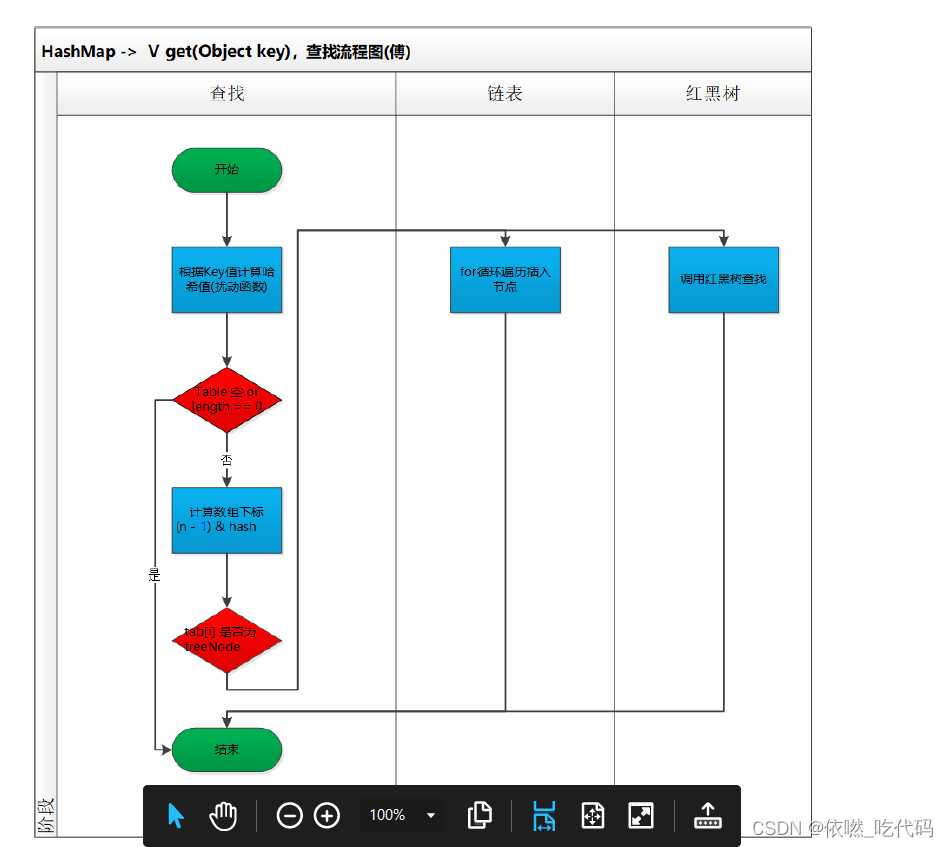
public V get(Object key) {
Node<K,V> e;
// 同样需要经过扰动函数计算哈希值
return (e = getNode(hash(key), key)) == null ? null : e.value;
}
final Node<K,V> getNode(int hash, Object key) {
Node<K,V>[] tab; Node<K,V> first, e; int n; K k;
// 判断桶数组的是否为空和长度值
if ((tab = table) != null && (n = tab.length) > 0 &&
// 计算下标,哈希值与数组长度-1
(first = tab[(n - 1) & hash]) != null) {
if (first.hash == hash && // always check first node
((k = first.key) == key || (key != null && key.equals(k))))
return first;
if ((e = first.next) != null) {
// TreeNode 节点直接调用红黑树的查找方法,时间复杂度O(logn)
if (first instanceof TreeNode)
return ((TreeNode<K,V>)first).getTreeNode(hash, key);
// 如果是链表就依次遍历查找
do {
if (e.hash == hash &&
((k = e.key) == key || (key != null && key.equals(k))))
return e;
} while ((e = e.next) != null);
}
}
return null;
}
总结
- 扰动函数的使用,获取新的哈希值,这在上一章节已经讲过
- 下标的计算,同样也介绍过 tab[(n 1) & hash])
- 确定了桶数组下标位置,接下来就是对红黑树和链表进行查找和遍历操作了
四、删除
public V remove(Object key) {
Node<K,V> e;
return (e = removeNode(hash(key), key, null, false, true)) == null ?
null : e.value;
}
final Node<K,V> removeNode(int hash, Object key, Object value,
boolean matchValue, boolean movable) {
Node<K,V>[] tab; Node<K,V> p; int n, index;
// 定位桶数组中的下标位置,index = (n - 1) & hash
if ((tab = table) != null && (n = tab.length) > 0 &&
(p = tab[index = (n - 1) & hash]) != null) {
Node<K,V> node = null, e; K k; V v;
// 如果键的值与链表第一个节点相等,则将 node 指向该节点
if (p.hash == hash &&
((k = p.key) == key || (key != null && key.equals(k))))
node = p;
else if ((e = p.next) != null) {
// 树节点,调用红黑树的查找方法,定位节点。
if (p instanceof TreeNode)
node = ((TreeNode<K,V>)p).getTreeNode(hash, key);
else {
// 遍历链表,找到待删除节点
do {
if (e.hash == hash &&
((k = e.key) == key ||
(key != null && key.equals(k)))) {
node = e;
break;
}
p = e;
} while ((e = e.next) != null);
}
}
// 删除节点,以及红黑树需要修复,因为删除后会破坏平衡性。链表的删除更加简单。
if (node != null && (!matchValue || (v = node.value) == value ||
(value != null && value.equals(v)))) {
if (node instanceof TreeNode)
((TreeNode<K,V>)node).removeTreeNode(this, tab, movable);
else if (node == p)
tab[index] = node.next;
else
p.next = node.next;
++modCount;
--size;
afterNodeRemoval(node);
return node;
}
}
return null;
}
- 删除的操作也比较简单,这里面都没有太多的复杂的逻辑。
- 另外红黑树的操作因为被包装了,只看使用上也是很容易。
五、遍历
HashMap中的遍历也是非常常用的API方法,包括: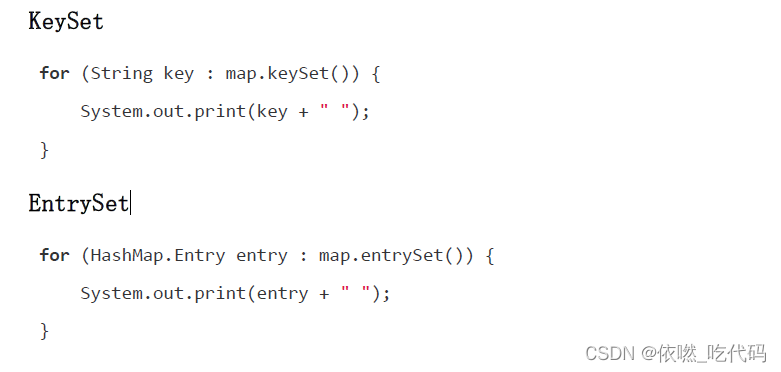
从方法上以及日常使用都知道,KeySet是遍历是无序的,但每次使用不同方式遍历包括keys.iterator(),它们遍历的结果是固定的。
那么从实现的角度来看,这些种遍历都是从散列表中的链表和红黑树获取集合值,那么他们有一个什么固定的规律吗?
测试的场景和前提;
- 这里我们要设定一个既有红黑树又有链表结构的数据场景
- 为了可以有这样的数据结构,我们最好把 HashMap 的初始长度设定为 64 ,避免在
链表超过 8 位后扩容 ,而是直接让其转换为红黑树。 - 找到 18 个元素,分别放在不同节点 这些数据通过程序计算得来
- 桶数组 02 节点: 24 、 46 、 68
- 桶数组 07 节点: 29
- 桶数组 12 节点: 150 、 172 、 194 、 271 、 293 、 370 、 392 、 491 、 590
测试
import org.junit.Test;
import java.util.HashMap;
import java.util.Map;
public class HashMapIterator {
@Test
public void test_iterator(){
Map<String, String> map = new HashMap<String, String>(64);
map.put("24", "Idx:2"); map.put("46", "Idx:2"); map.put("68", "Idx:2");
map.put("29", "Idx:7"); map.put("150", "Idx:12"); map.put("172", "Idx:12");
map.put("194", "Idx:12"); map.put("271", "Idx:12");
System.out.println("排序01:");
for (String key : map.keySet()) {
System.out.print(key + " ");
}
map.put("293", "Idx:12"); map.put("370", "Idx:12"); map.put("392", "Idx:12");
map.put("491", "Idx:12"); map.put("590", "Idx:12");
System.out.println("\n\n排序02:");
for (String key : map.keySet()) {
System.out.print(key + " ");
}
map.remove("293"); map.remove("370"); map.remove("392");
map.remove("491"); map.remove("590");
System.out.println("\n\n排序03:");
for (String key : map.keySet()) {
System.out.print(key + " ");
}
}
}
结果
排序01:
24 46 68 29 150 172 194 271
排序02:
24 46 68 29 271 150 172 194 293 370 392 491 590
排序03:
24 46 68 29 172 271 150 194
Process finished with exit code 0
测试过程如下:
- 添加元素,在 HashMap 还是只链表结构时,输出测试结果 01
- 添加元素,在 HashMap 转换为红黑树时候,输出测试结果 02
- 删除元素,在 HashMap 转换为链表结构时,输出测试结果 03
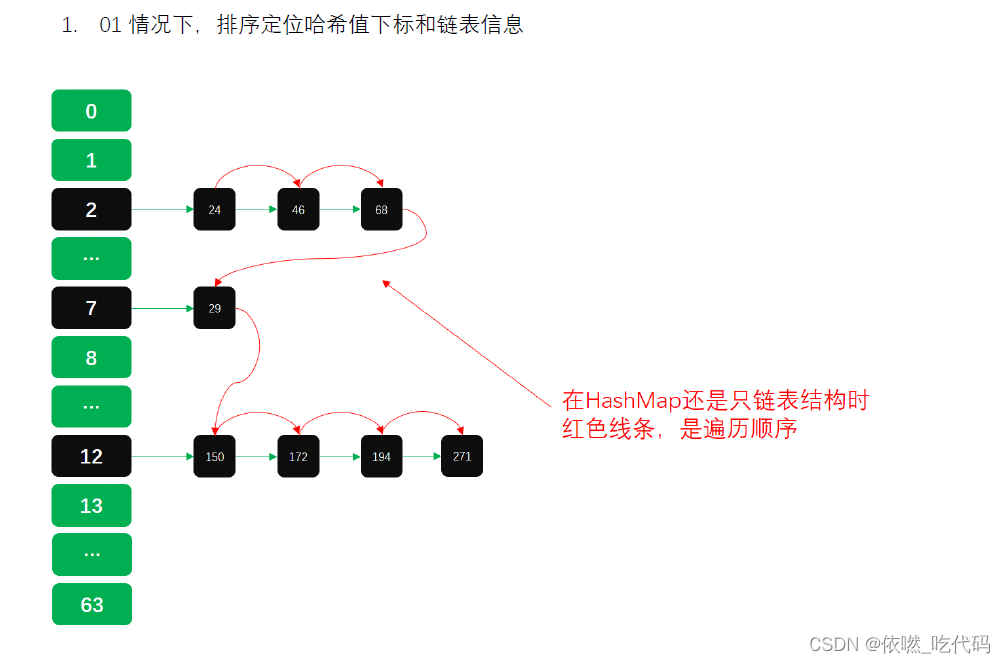
2. 02 情况下,因为链表转换为红黑树,树根会移动到数组头部。
moveRootToFront() 方法
